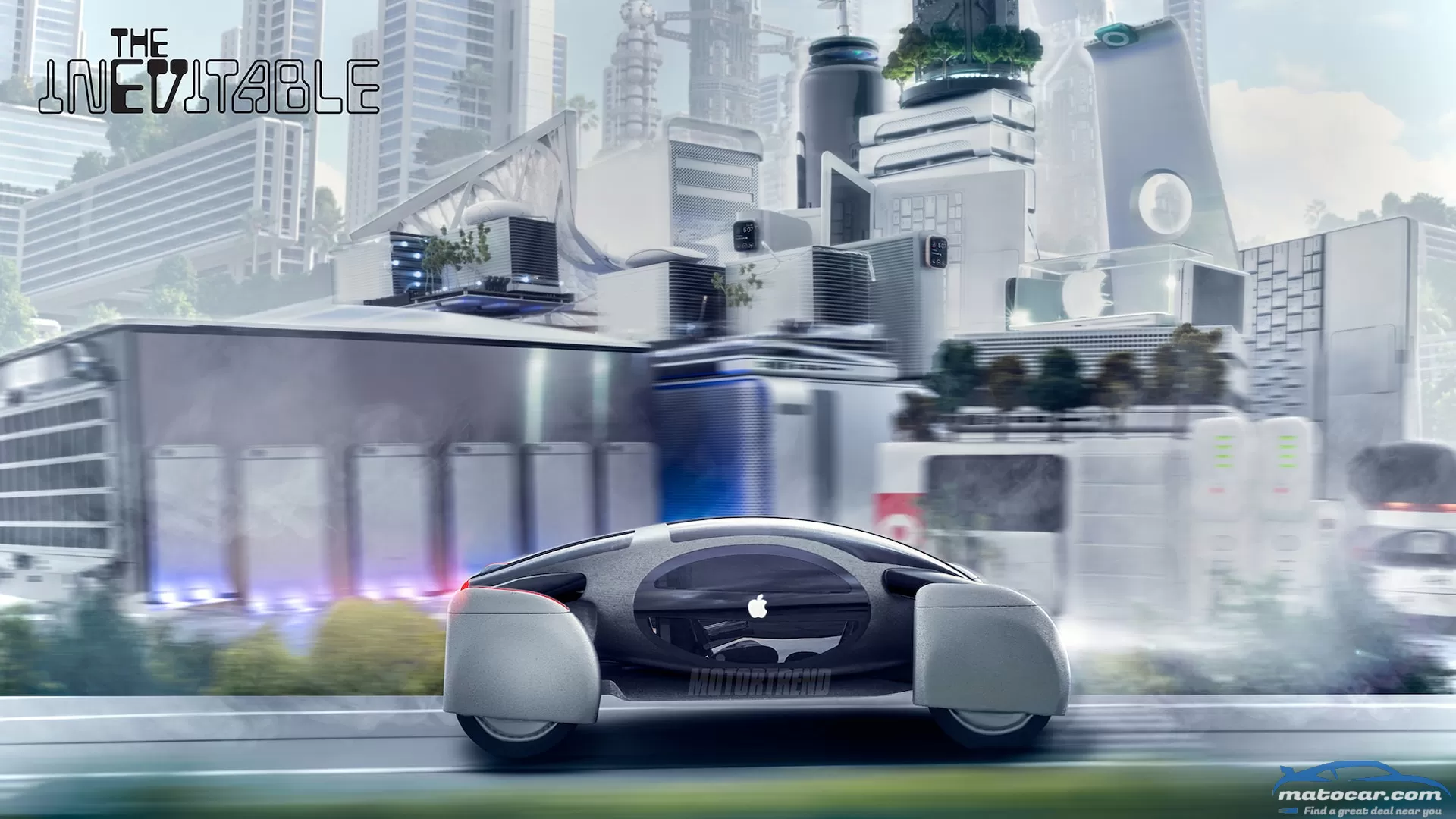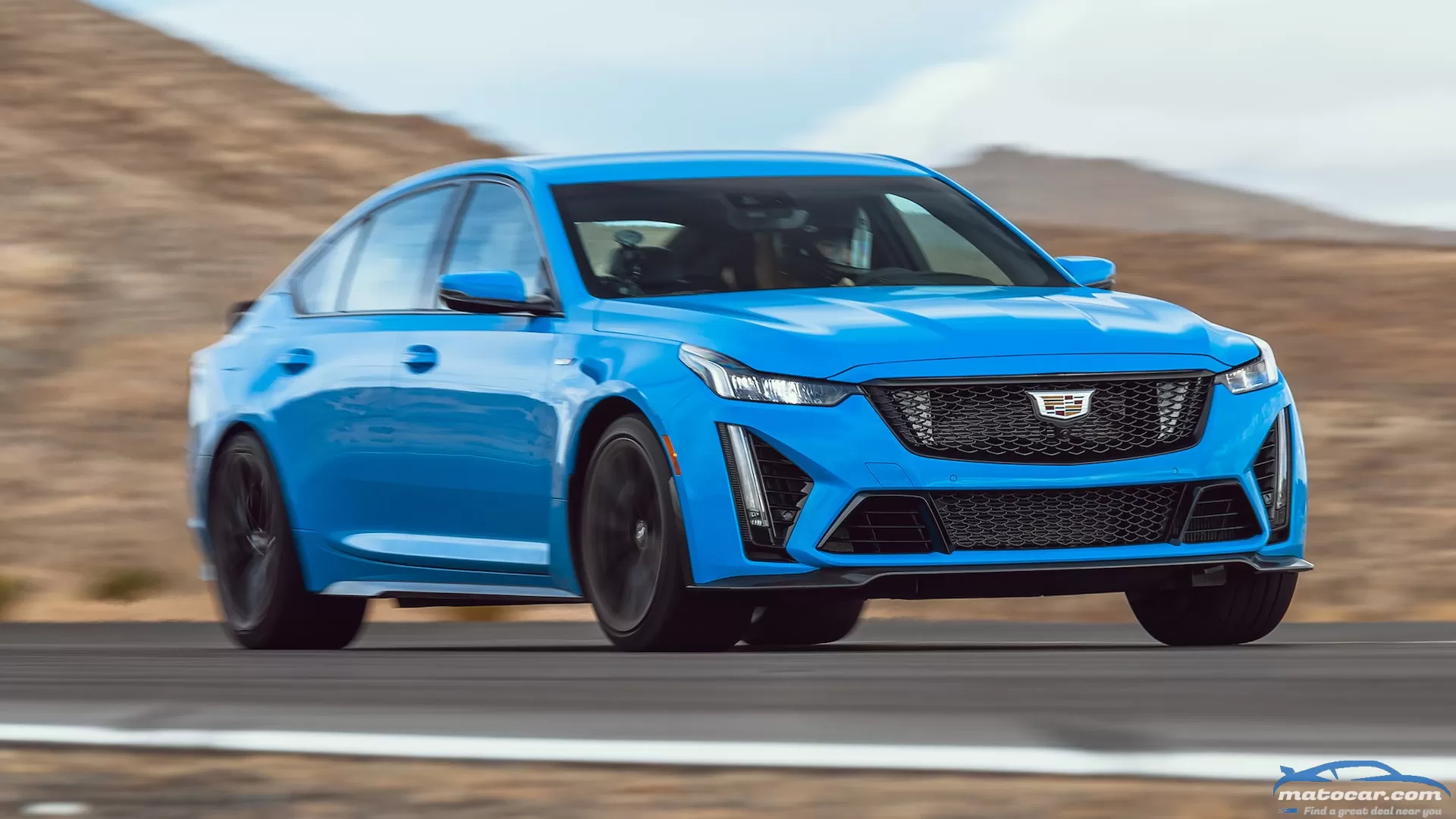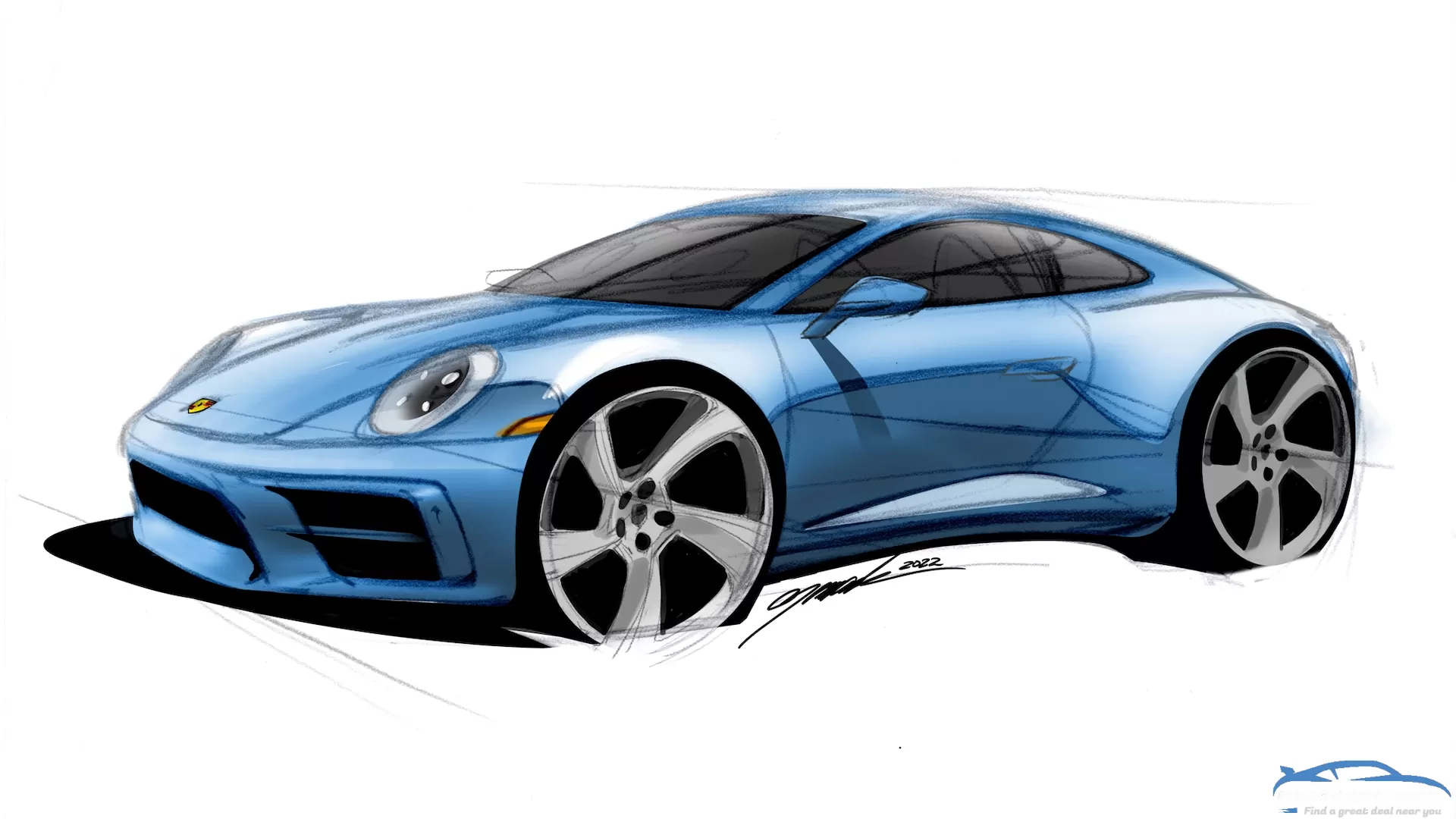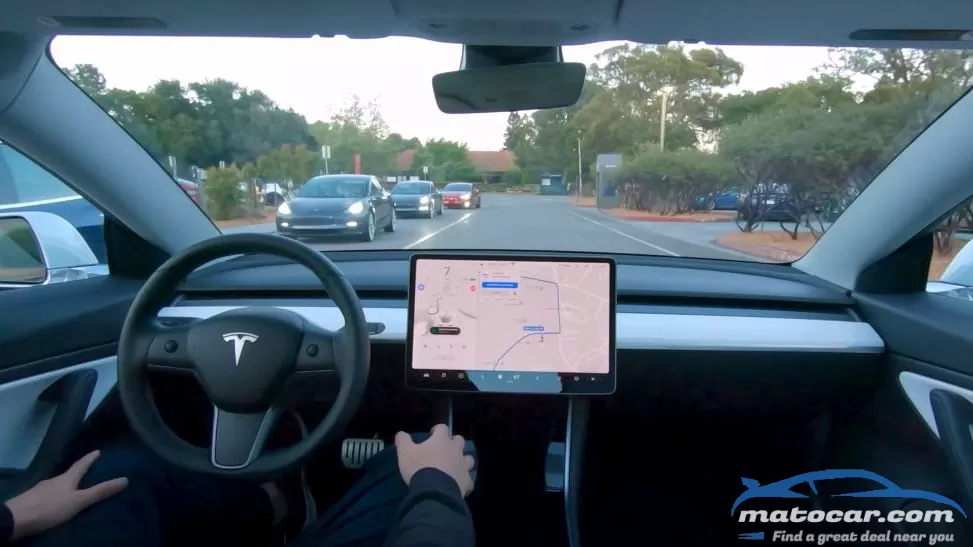MatoCar's Apple Car 2.0: How We Did It

Speculation can be simple, a few folks gathered at a bar and wondering about the future. Creating a physical manifestation of that future and bringing it to life is anything but. Our process began with Garrett DeBry, an ArtCenter College of Design grad, concept artist for BMW and Toyota, and the man who developed our first Apple Car concept in 2016.
DeBry is a proper futurist, spending hours poring over Syd Mead designs and listening to the Interstellar and Blade Runner 2049 soundtracks while working on sketches. From our side, we looked further into the future this time around, which afforded DeBry the freedom to design a vehicle that would fit into an Apple Car ecosystem, rather than imagining a comparatively simple autonomous Uber competitor.
His inspirations range from the wraparound corner windows of Apple's flagship Chicago store to Amazon warehouse robots to the natural materials and organic shapes of the iconic midcentury modern Charles Eames lounge chair. On this project, DeBry worked to minimize automotive design to its core elements. This thought process is how we ended up with the ultra-slick suspended teardrop you see here, but that was only the start.
Once DeBry submitted final sketches, we called on teams from around the world to lift his design off the page. Our second take on the Apple Car was painstakingly modeled in CAD so we could provide the files to a local 3-D print shop. After multiple days printing the 16-piece scale model you see here and bringing DeBry's design into the material world, it received countless coats of paint and finishing touches.
Once we reached that point, Mumbai, India-based automotive photographer Kunaal Kelkar came to town to employ his own wizardry. Kelkar's work first came to our attention in 2020 when he published a shockingly realistic photo set that was in reality a scale Lamborghini Huracán posed on a wet treadmill. For the Apple Car, he spent four days building a future city almost entirely out of Apple products found around our offices. The results speak for themselves.
You may also like
cadillac ct5 Full OverviewCadillac's story in the two decades since the year 2000 has been one of chasing dreams. It went on a search for Art and Science. It traveled east to New York to find brand cachet and score modeling gigs. Like every carmaker, it pivoted wildly to crossovers and SUVs. Then along came EVs and the pledge that every Cadillac would soon be all-electric, all the time.Then there was V, the attempt to out-German the Germans at sport sedans. Like many of Cadillac's efforts in the past 20 years, it didn't quite pan out. But man, did the company ever get close, and the 2022 Cadillac CT5-V Blackwing is the proverbial going-out-with-a-bang car that should reverberate as one of the greatest American sport sedans of all time 20 years from now.The powertrain numbers are the pinnacle of Cadillac's gas-only power and performance: 668 hp and 659 lb-ft of torque from a 6.2-liter supercharged, direct-injected V-8. The engine itself is one of the last of the venerable LTs from GM's murderer's row of V-8s—the LT4. You get your choice of transmissions to pair with this aluminum-cast monster: an available 10-speed automatic or the standard Tremec six-speed manual.How Well Does the CT5-V Perform?For our instrumented test runs, we scored a manual-equipped version of the 2022 Cadillac CT5-V Blackwing. It also came with one significant performance upgrade, Cadillac's optional carbon-ceramic front and rear brake package ($9,000). Though our test team experienced some issues launching the car from a stop, the CT5-V (eventually) performed about as expected.In fact, our number from 0-60 mph mirrored what Cadillac called out in its own estimates, a 3.6-second run. But it didn't exactly come easy. We found it incredibly tricky to get the CT5-V to hook up, despite following Cadillac's extensive launch instructions, including bleeding the tires down to 35 psi, which helped.Our most experienced tester, road test editor Chris Walton, also had his hands full with getting the CT5-V to launch correctly and channeling the car's prodigious power to the pavement. It ultimately thundered its way to a best quarter-mile time of 11.5 seconds at 127.5 mph."I, too, struggled with the launch on this car," Walton said. "It's one of those 'you can't go to wide-open throttle until the very top of first gear or you roast the rear tires.' I tried automatic launch control first, then started tweaking the launch rpm and tire-slip knobs. After failures and some successes, I found one that worked on our testing surface: 4,000 rpm with 10 percent slip, which goes against logic, but it worked."The brakes were also a bone of contention with the test team. We recorded 102 feet to stop from 60 mph—a more than respectable number, especially considering the CT5-V Blackwing's 4,067-pound curb weight—but Walton wasn't exactly enamored with what he found when he pressed the slow pedal. "The brakes are OK," he said. "The pedal feels unnecessarily firm, making it difficult to modulate on the release into the skidpad." That said, the team reported that the carbon units held up well after repeated whoa downs from triple-digit speeds.Dynamic Numbers Are DynamicWe also had some trouble getting things totally sorted on the skidpad, but the 2022 Cadillac CT5-V Blackwing still put up some super numbers in the lateral-g and figure-eight departments, helped in part by a set of Michelin Pilot Sport 4S tires. Its 1.04-g average number is up there with the best sedans we've tested in recent years, and it matches that of the 2022 BMW M5 CS (interestingly, its CT4-V Blackwing stablemate performed a smidge better at 1.05 g).Out on our MotorTrend figure eight, the CT5-V Blackwing posted a 23.4-second lap at 0.89 g (average), with the M5 edging it at 23.2 seconds at 0.92 g. No, it didn't quite out-German the M5 dynamically, but for a front-engine, rear-drive sedan with a manual transmission (the M5 is all-wheel drive with an eight-speed automatic), the Cadillac is right there with it. That's duly impressive for a car that is in essence in its first and last generation. Yes, it's an evolution of the CTS-V, but the 2022 Cadillac CT5-V Blackwing is its own car, a Blackwing that can really fly.SPECIFICATIONS 2022 Cadillac CT5 V Blackwing BASE PRICE $84,990 PRICE AS TESTED $112,545 VEHICLE LAYOUT Front-engine, RWD, 5-pass, 4-door sedan ENGINE 6.2L Supercharged direct-injected OHV 16-valve 90-degree V-8 POWER (SAE NET) 668 hp @ 6,500 rpm TORQUE (SAE NET) 659 lb-ft @ 3,600 rpm TRANSMISSION 6-speed manual CURB WEIGHT (F/R DIST) 4,067 lb (54/46%) WHEELBASE 116.0 in LENGTH x WIDTH x HEIGHT 194.9 x 74.1 x 56.5 in 0-60 MPH 3.6 sec QUARTER MILE 11.5 sec @ 127.5 mph BRAKING, 60-0 MPH 102 ft LATERAL ACCELERATION 1.04 g (avg) MT FIGURE EIGHT 23.4 sec @ 0.89 g (avg) EPA CITY/HWY/COMB FUEL ECON 13/21/15 mpg ON SALE Now Show All Looks good! More details?
There is a legitimate debate to be had over whether Autopilot, Tesla's lane-centering and adaptive cruise control driver assists isn't as safe or capable as it claims. But as with many things Tesla, things can easily get muddy, and not just because the pioneering automotive automaker evaporated its PR team years ago. Take, for example, The Dawn Project founded by Dan O'Dowd, who also owns Green Hills Software, which technically competes with Tesla's software. O'Dowd himself has kicked off a congressional bid vowing to rid the world of the "scourge" that is Autopilot, and recently released a video showing a Tesla running Autopilot running over a child mannequin to "prove" the system's failings.Of course this gambit went viral, not least because it inspired Tesla's cult-like owners to use their own children—or try and borrow other children, and we're not joking—to disprove The Dawn Project's claims. Now, Tesla is declaring the original video is defamatory and demanding that the clip be removed, since it "misrepresents" the safety and capabilities of Autopilot and FSD (the step-above, still-not-yet-in-production Full Self Driving feature Tesla is real-world testing using its customers). As regular followers of Tesla's ups and downs are surely aware, there is mounting evidence that the Autopilot software isn't as perfect as Tesla and CEO Elon Musk claim it is. The National Highway Traffic Safety Administration (NHTSA) is currently investigating the feature after several instances of Teslas crashing into stationary vehicles or objects roadside, namely emergency vehicles.The Video In QuestionOne video shows a Tesla Model 3 with FSD Beta 10.12.2 running over a child-sized mannequin in a crosswalk; the Tesla never slows down, even once it hits it. Another clip has better production value and is taken at Willow Springs International Raceway using a similar child-like mannequin, which is summarily mowed down by a Tesla in the same manner as in the other video.Initially, the response from Tesla's overzealous fans with small children of their own was to march those kids in front of their moving cars to "prove" that FSD and Autopilot work as intended. Fortunately, no children were sacrificed at the altar of Tesla's public relations, but YouTube did step in to remove many of those videos, leaving for the originals made by The Dawn Project.Now Tesla, according to a letter attained by the Washington Post, is demanding that The Dawn Project and Dan O'Dowd remove those videos because of their defamatory nature that have disparaged "Tesla's commercial interests" of Tesla's Full Self Driving technology. Dinna Eskin, senior director and deputy general counsel at Tesla, also demands in the letter that O'Dowd and The Dawn Project "immediately cease and desist further dissemination of all defamatory information, issue a formal public retraction within 24 hours and provide Tesla with the below demanded documentation."Many of the complaints or concerns aired by O'Dowd and his project are seemingly legitimate or possible to make in good faith, though it seems best to leave such investigation to the unbiased experts at NHTSA, which, again, has begun investigating other safety issues surrounding Tesla's Autopilot. While not every bad messenger needs to have a squeaky clean background, it's tough to paper over the obvious conflicts of interest between O'Dowd and software related to driver assistance features and, well, Tesla.Who is Dan O'Dowd?Dan O'Dowd is a software engineer who graduated from the California Institute of Technology with a Bachelor of Science in Engineering in 1976. He then went on to work on embedded development tools for early microprocessors used in Mattel's handheld electronic games of the late 1970s. O'Dowd also worked with National Semiconductor (who is now owned by Texas Instruments) to design the NS32000 32-bit microprocessor used in 1980s personal computers such as the IBM RT PC, the BBC Micro, and others. His company, Green Hills Software, was founded in 1982 and its claim to fame was being the "first and only" software company to develop an operating system (OS) that meet the NSA's certification for EAL 6+ High Robustness, meaning that it's incredibly difficult to attack this OS no matter how well funded and "hostile" your hacker is.Green Hills also states that it developed the OS for the Boeing 787, the Lockheed Martin F-35 multirole fighters, Boeing B1-B bomber, and Orion Crew Exploration Vehicle manufactured by Lockheed Martin and operated by NASA (which, coincidentally, has a glass cockpit derived from the 787's). Green Hills is also the Advanced Driver Assistance System (ADAS) software supplier for the 2022 BMW iX EV crossover, which raises yet another, if slightly tangential conflict of interest here.O'Dowd also had a brief run as a Democratic primary candidate for California's Senator Seat (eventually won by Alex Padilla) and his campaign message was all about cybersecurity and Tesla's FSD and Autopilot safety. It was roughly around this time that The Dawn Project launched but it was a full-page New York Times ad back in January 2022 that got the attention of the general public. In that paid ad, The Dawn Project led with "Don't Be A Tesla Crash Test Dummy" and then laid out a case for why Autopilot and FSD were "unsafe at any speed." It and O'Dowd then began several video campaigns demonstrating the failures of Autopilot and FSD with child mannequins as was demonstrated above.Again, while Tesla may have a case against O'Dowd and O'Dowd might be merely asking fair safety related questions, the situation here is, frankly, a bit of a mess. To answer the obvious question here, which is whether or not a Tesla will indiscriminately flatten children should it meet them in a roadway while its Autopilot or FSD features are active, a lot more investigation needs to take place. We'll need more scientific endeavors than possibly biased social media clips of mannequins (or real children) being aimed at by moving Teslas. So, while it might seem like Tesla has a brewing problem here, so far, there isn't much to go on. That could change should anything come from the separate investigation being conducted by NHTSA and any corrective actions it recommends. But for now, can we think of the poor mannequins? Oh, and while Tesla has no PR team to reach out to, we assume (based on its cease and desist letter to O'Dowd) the automaker would prefer you not try and replicate The Dawn Project's, uh, project.




0 Comments